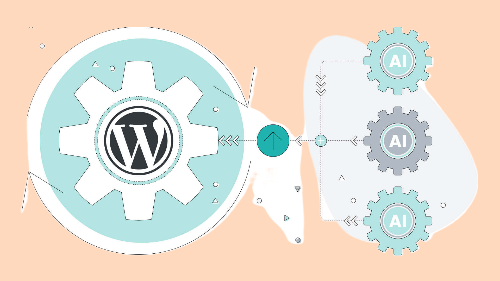Within the dynamic realm of digital marketing, Search Engine Optimization (SEO) is a vital instrument for augmenting online presence and generating natural traffic to websites. WordPress and Webflow stand out as two of the many website-building systems that are now on the market, each with a unique set of features and functionalities. Users of both platforms can design beautiful websites with different levels of capability and personalization. But which platform is the greatest in terms of SEO power?
In the world of content management systems (CMS), WordPress is well-known and has long been praised for its strong plugin ecosystem and SEO-friendliness. Conversely, Webflow, a newcomer to the website design scene, has drawn notice for its sophisticated design skills and user-friendly layout. With both individuals and organizations looking to maximize their online visibility, the question of which platform has the best advantage in terms of SEO emerges.
We explore the complexities of SEO performance on WordPress and Webflow in this in-depth examination, looking at important elements like content optimization, mobile friendliness, site structure, and page speed, among others. Through elucidating the advantages and disadvantages of every platform, our goal is to equip consumers with the necessary knowledge to make an informed choice about their website-building pursuits. Now, let’s set out on this quest to determine which platform—Wordflow or WordPress—represents the pinnacle of excellence in the field of SEO.
Is WordPress more SEO-friendly than Webflow?

Webflow and WordPress are both excellent at SEO, but in different ways. WordPress provides a wide range of tools for technical SEO, content management, and on-page optimization because of its robust plugin ecosystem and active community. Its extensive usage and significant degree of customization add to its SEO adaptability. On the other hand, Webflow’s responsive design and quick load times are made possible by its clear code and user-friendly design interface, which are important elements in SEO rankings. The decision between Webflow and WordPress depends on the particular needs and tastes of the project; Webflow’s simplified approach can result in better performance and user experience, while WordPress offers more sophisticated SEO plugins and customization choices.
Is Webflow more SEO-friendly than WordPress?

Several factors determine whether Webflow performs better in SEO than WordPress. Webflow contributes to faster load times and a better user experience—two factors that are critical for SEO rankings—by providing clear, lightweight code and easy-to-use design tools. Its built-in SEO tools, which include choices for structured data and modifiable meta tags, offer a strong base for optimization. But WordPress offers strong tools for technical SEO, content management, and on-page optimization, along with a large ecosystem of plugins and community support. The decision between Webflow vs WordPress for SEO ultimately comes down to personal tastes, project specifications, and needs. Every platform offers advantages that can be successfully used to achieve SEO success.
Some latest SEO features of WordPress in 2024:
1. Advanced Schema Markup Functionalities: In 2024 WordPress has incorporated advanced schema markup functionalities straight into its core, further expanding its capabilities. With the help of this tool, users can quickly add structured data markup to any page on their website, which improves content comprehension and interpretation for search engines. Rich snippets, knowledge panels, and other SERP elements can be used by WordPress websites to increase their exposure in search results through schema markup, which will ultimately increase click-through rates and drive more organic traffic.
2. Artificial Intelligence (AI) Technology Content Optimization: WordPress has adopted artificial intelligence (AI) technology to provide state-of-the-art capabilities for content optimization. Users can obtain real-time insights and suggestions to enhance the caliber and applicability of their content for both search engines and users using AI-driven analysis. This tool helps WordPress users create high-performing, SEO-friendly content more effectively and efficiently by improving headings, meta descriptions, keyword utilization, readability, and overall content structure.

3. Integrated Core Web Vitals Optimization: WordPress now comes with built-in tools for Core Web Vitals optimization, recognizing the growing significance of user experience metrics in search engine results. Website owners may monitor and enhance important performance parameters including visual stability, loading speed, and interactivity with the aid of these tools. WordPress websites that prioritize user-centric performance optimization can improve visitor experiences, which lowers bounce rates and increases engagement, in addition to improving their SEO rankings.
4. Options for Voice Search Optimization: WordPress has included specific options to optimize webpages for voice-enabled devices and virtual assistants in response to the growing popularity of voice search. This entails making material more responsive to natural language searches, organizing data so that it may be shown in featured snippets, and improving mobile friendliness and accessibility of the website. WordPress users may stay ahead of the curve and gain significant traffic from the expanding voice search user base by embracing voice search optimization. This will increase the visibility and engagement of their websites.

Some latest SEO Features of Webflow in 2024:
1. Dynamic Rendering for JavaScript-Heavy Websites: To solve the issues with JavaScript-heavy websites, Webflow added dynamic rendering capabilities in 2024. With this capability, Webflow sites can provide search engine crawlers with pre-rendered HTML content for optimal indexing and visibility in search results. Webflow websites can overcome the drawbacks of client-side rendering by efficiently rendering information server-side, which enhances SEO performance and organic search ranks.

2. AI-Powered SEO Suggestions: Webflow now uses artificial intelligence (AI) algorithms to offer customized SEO suggestions based on the particular requirements of every website. Webflow provides practical insights and optimization recommendations to enhance on-page elements, meta tags, site structure, and content quality through sophisticated analysis of website data and industry trends. Webflow users may now apply efficient SEO methods and improve their website’s exposure and competitiveness in search results thanks to this AI-driven strategy.
3. Integrated Core Web Vitals Monitoring and Optimization: Webflow has included tools for tracking and improving Core Web Vitals right into its platform since it understands how important user experience metrics are to search engine optimization. Website owners may monitor important metrics like visual stability, loading speed, and interactivity and get practical advice on how to make their sites run better. Webflow users can increase search engine rankings, lower bounce rates, and improve user experience by giving Core Web Vitals optimization top priority.
4. Structured Data Markup Automation: Automated Tools for Generating Schema.org Code Based on Website Content and Metadata Webflow has made the process of applying structured data markup more efficient. With the help of this tool, Webflow customers can quickly and effectively add structured data markup to their websites, improving content exposure and search engine interpretation. Webflow increases click-through rates and drives more organic traffic to websites by enabling rich snippet displays, knowledge graph entries, and other SERP enhancements through the use of structured data markup automation.

Final Choice: Webflow vs WordPress for SEO?
The decision between WordPress and Webflow for SEO is based on a number of variables, such as your tastes, level of technical expertise, and unique needs.
WordPress provides unmatched SEO flexibility and customization options because to its vast plugin ecosystem and active community. With the help of its extensive selection of SEO plugins, including Yoast SEO and All in One SEO Pack, users can effortlessly optimize on-page features, manage metadata, and apply sophisticated SEO tactics. Additionally, because WordPress offers a solid basis for creating and optimizing websites for search engines, its widespread use and familiarity make it a favorite option for many SEO professionals.
Conversely, Webflow is notable for its user-friendly interface, well-organized code, and sophisticated design features that enhance user experience and speed up load times—two aspects that are critical to search engine results. Despite having a smaller ecosystem of plugins than WordPress, Webflow’s integrated SEO features—like customized meta tags and choices for structured data—offer strong optimization foundations.
The choice between WordPress and Webflow for SEO ultimately comes down to your personal needs and goals. WordPress might be the better option if flexibility, a wide range of customization possibilities, and a robust plugin ecosystem are important to you. However, Webflow can be the best option if you value simple design tools, organized code, and efficient workflows. Both platforms have advantages that can be successfully used to achieve SEO success, therefore it’s critical to thoroughly assess your demands before choosing one.
Adlivetech website design services create a perfect blend of design aspects for its clients to design a masterpiece that can convey a brand message and curve a strong digital presence of the business.
Contact us: info@adlivetech.com
